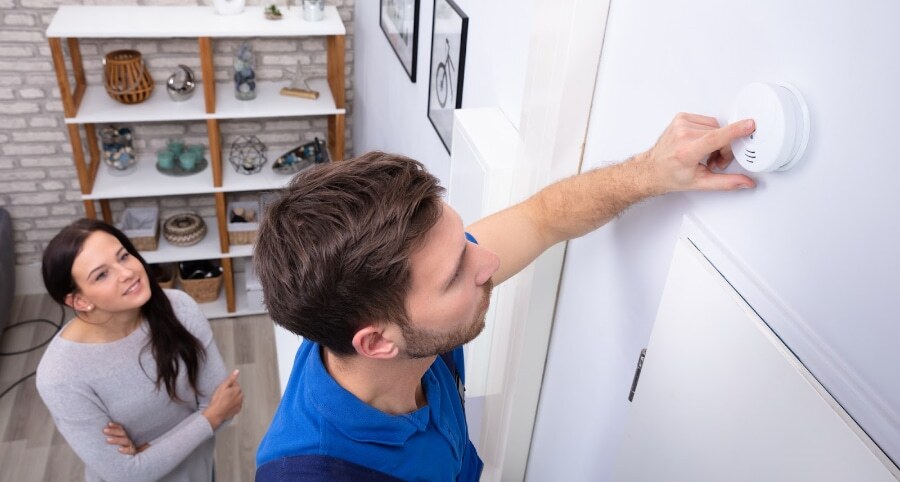Where to install carbon monoxide detectors in your State College home

Carbon monoxide is dissimilar to other risks home occupants encounter as you won’t see or smell it. Although it’s not detectable with your senses like fire, smoke, and flooding, you may still simply and effectively safeguard yourself with CO detectors. Find where to install carbon monoxide detectors in your State College home and learn about the advantages of incorporating them in your comprehensive security plan.
Where is CO gas found?
Owing to its dearth of color and odor, carbon monoxide is frequently referred to as the silent killer. It materializes because of an incomplete consumption of fuels in appliances like furnaces, generators, fireplaces, and gas stoves. Most families won’t encounter issues with their fuel-consuming appliances if they maintain them regularly. But if you forget about regular servicing or don’t have adequate ventilation, a collection of this potentially deadly gas can occur.
Early signs of carbon monoxide poisoning include dizziness, headaches, nausea, and vomiting. These usually emerge at low levels of CO. Being subjected to higher amounts for a longer time can lead to serious medical difficulties and even death.
Suggestions on where to install State College carbon monoxide detectors
Each home need to have no less than one carbon monoxide detector. In truth, you ought to have them on all floors, and that includes basements where fuel-burning appliances are frequently found. Follow these recommendations on where to install State College carbon monoxide detectors:
-
Install one within 10 feet of sleeping quarters. This placement is vital, so install it here in the event you only use one carbon monoxide detector.
-
It’s smart to have a carbon monoxide detector on all floors of your residence, specifically on those with fuel-burning appliances.
-
To avoid false alarms, place them a minimum of 10 feet away from causes of carbon monoxide, like gas stoves. A small amount of CO may be emitted when appliances start up.
- Avoid spots beside windows and doors, as outside air will impact the unit’s usefulness.
-
Put carbon monoxide detectors in areas above garages.
As you would with smoke alarms, test your CO units per manufacturer guidelines, clean them occasionally, and don’t place something directly next to them. Generally speaking, switch out your detectors every five years.
Enhance safety by integrating CO detectors into your home security system
Today’s home security systems provide more layers of protection than at any time before. Actually, you can add carbon monoxide detectors and other environmental alarms directly into your system. Doing so will notify you and your monitoring experts whenever your alarm perceives danger. This type of backup is valuable when you don’t hear the alarm or if you’re not home.
Enhance safety by integrating CO detectors into your home security system
Today’s home security systems provide more layers of protection than at any time before. Actually, you can add carbon monoxide detectors and other environmental alarms directly into your system. Doing so will notify you and your monitoring experts whenever your alarm perceives danger. This type of backup is valuable when you don’t hear the alarm or if you’re not home.
Install CO detectors with your Vivint smart home in State College
